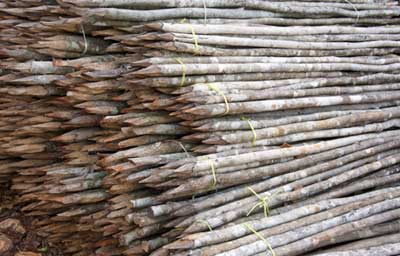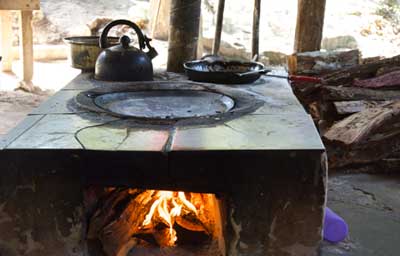Milpa maya sustentable

Toojil Xíimbal es una organización indígena maya que se constituyó legalmente como cooperativa en 2011, aunque ya desde 2009 sus integrantes trabajan en temas como planeación participativa, cultura e identidad, soberanía alimentaria, espacios agroecológicos integrales y recursos naturales, entre otros. Toojil Xíimbal significa justicia que camina en lengua maya, y es por eso que la organización surge con una misión de fortalecimiento de la identidad ante una realidad que ha desplazado a las semillas nativas y tradiciones originales. El objetivo principal es transmitir los saberes campesinos a las nuevas generaciones, recuperar los conocimientos, revalorarlos y volver a aplicarlos. “Pero no todo lo nuevo implica una amenaza”, comentan sus integrantes, “por eso a través de talleres y procesos participativos hacemos una revisión de lo más útil de ambos mundos, aquello que nos enseñan los abuelos y las innovaciones con las que hoy se cuenta para hacer una agricultura más sustentable”. En el año 2013, con apoyo de TNC y en el marco de la Alianza MREDD+, Toojil Xíimbal inició un proyecto de milpa maya sustentable incorporando nuevas prácticas de conservación. El proyecto más ambicioso de la organización es la creación de una escuela campesina con base en Hopelchén. Desde hace siete años, Toojil Xíimbal organiza una fiesta de semillas junto con nueve comunidades: Xcalot Akal, Xkix, San Juan Bautista Sahcabchén, San Francisco Suctuc, Hopelchén, Dzibalchén, Iturbide, Crucero San Luis e Ich Ek. Prefieren hablar de fiesta, y no de feria, porque involucra un concepto no tan mercantil, sino de celebración de la vida a través de las semillas. Los integrantes de Toojil Xíimbal mencionan que es muy difícil cambiar la idea de que lo más importante es el dinero restando importancia a la diversidad y la salud de la familia. En la milpa no se obtiene la misma ganancia económica que en una hectárea mecanizada, pero aporta otros beneficios muy importantes a cambio, como la eliminación de agroquímicos que pueden impactar negativamente en la salud de los campesinos y en el ambiente. Al hablar de milpa sustentable, se incorpora un concepto de protección del sistema de policultivo, así como de conservación de suelos y prácticas tendientes a mantener o mejorar la fertilidad. De esta manera se podría eliminar la agricultura migratoria que supone abandonar el predio cada tres o cinco años con la consecuente necesidad de deforestar nuevas áreas para cultivos, y se pasaría a una agricultura sedentaria. Otra manera de rescatar las prácticas ancestrales de cultivo se consideró que podría ser a través de una escuela campesina. Dicha escuela fue planeada para concretar en diez años, pero en el transcurso de los primeros tres años de planificación ya comenzó a hacerse realidad. Para esto, Toojil Xíimbal consiguió un terreno en Suctuc, muy cerca de Hopelchén, con una historia que refleja la realidad que buscan cambiar. Hace 30 años ese terreno era monte, pero por alguna razón se deforestó y fue escenario de una agricultura mecanizada. Una vez abandonado, el terreno quedó invadido de zacate Johnson (Sorgum halepense) y coquillo (Cyperus sp.), dos especies exóticas muy difíciles de erradicar. Bajo esas condiciones, los integrantes de Toojil Xíimbal se hicieron cargo del terreno para comenzar a trabajar la tierra con principios agroecológicos, y la transformación ha sido aleccionadora.
Poco a poco la gente se fue apropiando de la iniciativa de la feria de semillas, y Toojil Xíimbal participó de la organización con el concepto de fiesta de semillas. “Cuando comenzamos con estas fiestas de semillas contábamos con cuatro variedades de maíz, y hoy ya podemos encontrar nueve variedades que se cultivan en la zona”, comenta Madhavi Tello, responsable administrativa de la cooperativa. En la séptima fiesta de semillas, que se llevó a cabo en mayo de 2014 y contó con representantes de toda la Península de Yucatán, el ejido de Dzibalchén asumió casi totalmente la organización del evento. Esto tiene un valor muy grande, reconocen los integrantes de la cooperativa, ya que demuestra que las comunidades son conscientes de la importancia de recuperar las semillas nativas. Además de aspectos organizativos en las comunidades, otras áreas de trabajo que fomenta la cooperativa se centran en técnicas de lombricomposta y compostas simples, cría de cerdo pelón mexicano, manejo y control de plagas, preparación de bocashi, manejo de abejas meliponas, cultivo de hortalizas y milpa maya. Esto comenzó siendo solo capacitaciones, pero hoy se suma el trabajo en espacios definidos de Hopelchén y Suctuc. En 2014, en el marco de la Alianza MREDD+, se inicia el proyecto para el desarrollo de un modelo de milpa maya sustentable que combine la técnica tradicional con algunas técnicas mejoradas, como por ejemplo lograr una milpa sedentaria en lugar de itinerante, eliminar quemas e incorporar abonos orgánicos.
 “Nosotros creemos que tener una ONG no es un medio para ganarnos la vida, sino un medio para la vida de la comunidad, para la gente que se está organizando porque quiere transformar su realidad”, comenta Madhavi. En ese sentido, la fiesta de semillas fue clave porque motivó la organización de las personas, y lo más importante es que después de la fiesta la gente realmente siembra las variedades que recibieron. Elizabeth Mena, asesora comunitaria de la cooperativa, considera que lo más importante es que sea la misma gente quien decida rescatar la milpa maya como modo de cultivo, y no que responda solo a una propuesta de los asesores técnicos. Esto es un proceso que lleva tiempo porque los productores solos van descubriendo las ventajas de no depender de paquetes tecnológicos, y la gente termina comprendiendo que hay un beneficio en la salud de las personas y de la tierra. Doña Leticia Carmen Dzib, promotora en las comunidades, cuenta que comenzó a cultivar en la granja de Toojil Xíimbal donde siembra chícharos, jamaica, chile, tomate, rábano, cilantro, ibes, entre otras cosas. “Mi esposo, comenta doña Leticia, siembra 30 hectáreas de milpa mecanizada, pero este año probó de hacer 7 hectáreas sin agroquímicos y tuvo buena cosecha de calabazas. Por otra parte, ya está comenzando a acompañarnos en la granja de la cooperativa, e incluso mi hijo me pide ir a la granja a sembrar”. Para José Trinidad (Mahatma), técnico forestal de Toojil Xíimbal, lo más satisfactorio del rescate de la milpa como técnica de cultivo es que crea un ambiente de trabajo familiar, donde todos van a trabajar porque quieren y no por dinero. “Nosotros podemos tener una idea, dice Mahatma, pero lo más importante es llegar a las comunidades y escuchar qué es lo que la gente quiere y siente, es ahí donde surgen las mejores ideas”. La adopción genuina de la milpa sustentable podría tener un impacto positivo en el mediano plazo para reducir la deforestación a nivel local. Esto es debido a que el mantenimiento de la fertilidad en el suelo, junto con un aumento de la productividad y reducción de costos, hacen innecesario el abandono del predio y la incorporación de nuevas tierras cultivables. Pasar de una agricultura migratoria a una sedentaria implica que las áreas adyacentes a la milpa que tienen presencia de bosques pasarían a tener una amenaza menos para su supervivencia, y un siguiente paso hacia el manejo sustentable de dichos bosques podría ser el camino que en conjunto garantice su conservación. |





















